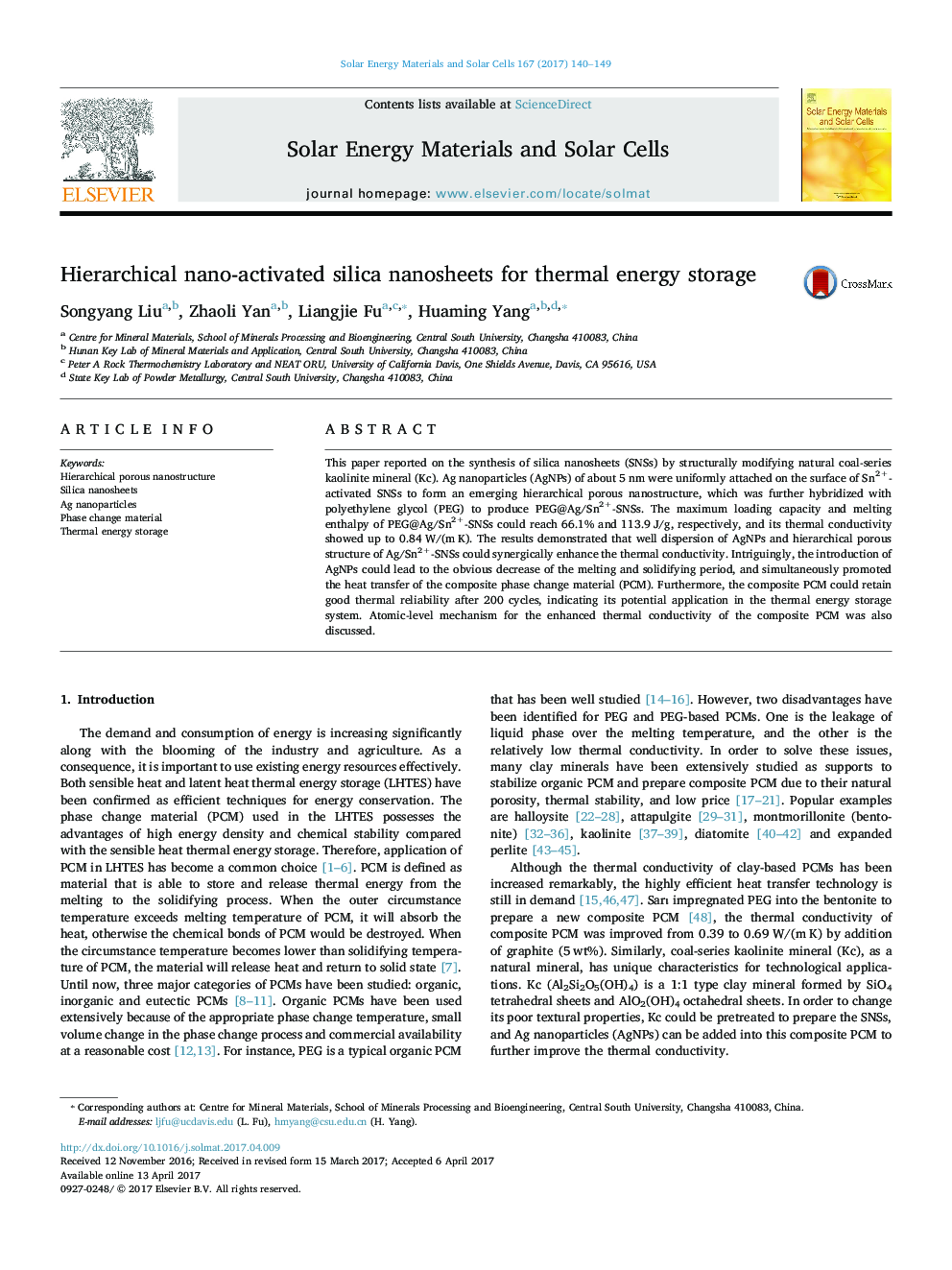| Article ID | Journal | Published Year | Pages | File Type |
|---|---|---|---|---|
| 6457271 | Solar Energy Materials and Solar Cells | 2017 | 10 Pages |
â¢Coal-series kaolinite was structurally modified to prepare silica nanosheets (SNSs).â¢Ag nanoparticles (AgNPs) of about 5 nm were uniformly on Sn2+-activated SNSs.â¢Ag/Sn2+-SNSs hybridized PEG to produce a novel composite phase change material.â¢The composite PCM still remained good thermal reliability after 200 cycles.â¢Hierarchical porous structure of Ag/Sn2+-SNSs benefited the thermal conductivity.
This paper reported on the synthesis of silica nanosheets (SNSs) by structurally modifying natural coal-series kaolinite mineral (Kc). Ag nanoparticles (AgNPs) of about 5 nm were uniformly attached on the surface of Sn2+-activated SNSs to form an emerging hierarchical porous nanostructure, which was further hybridized with polyethylene glycol (PEG) to produce PEG@Ag/Sn2+-SNSs. The maximum loading capacity and melting enthalpy of PEG@Ag/Sn2+-SNSs could reach 66.1% and 113.9 J/g, respectively, and its thermal conductivity showed up to 0.84 W/(m K). The results demonstrated that well dispersion of AgNPs and hierarchical porous structure of Ag/Sn2+-SNSs could synergically enhance the thermal conductivity. Intriguingly, the introduction of AgNPs could lead to the obvious decrease of the melting and solidifying period, and simultaneously promoted the heat transfer of the composite phase change material (PCM). Furthermore, the composite PCM could retain good thermal reliability after 200 cycles, indicating its potential application in the thermal energy storage system. Atomic-level mechanism for the enhanced thermal conductivity of the composite PCM was also discussed.
Graphical abstractDownload high-res image (328KB)Download full-size image
